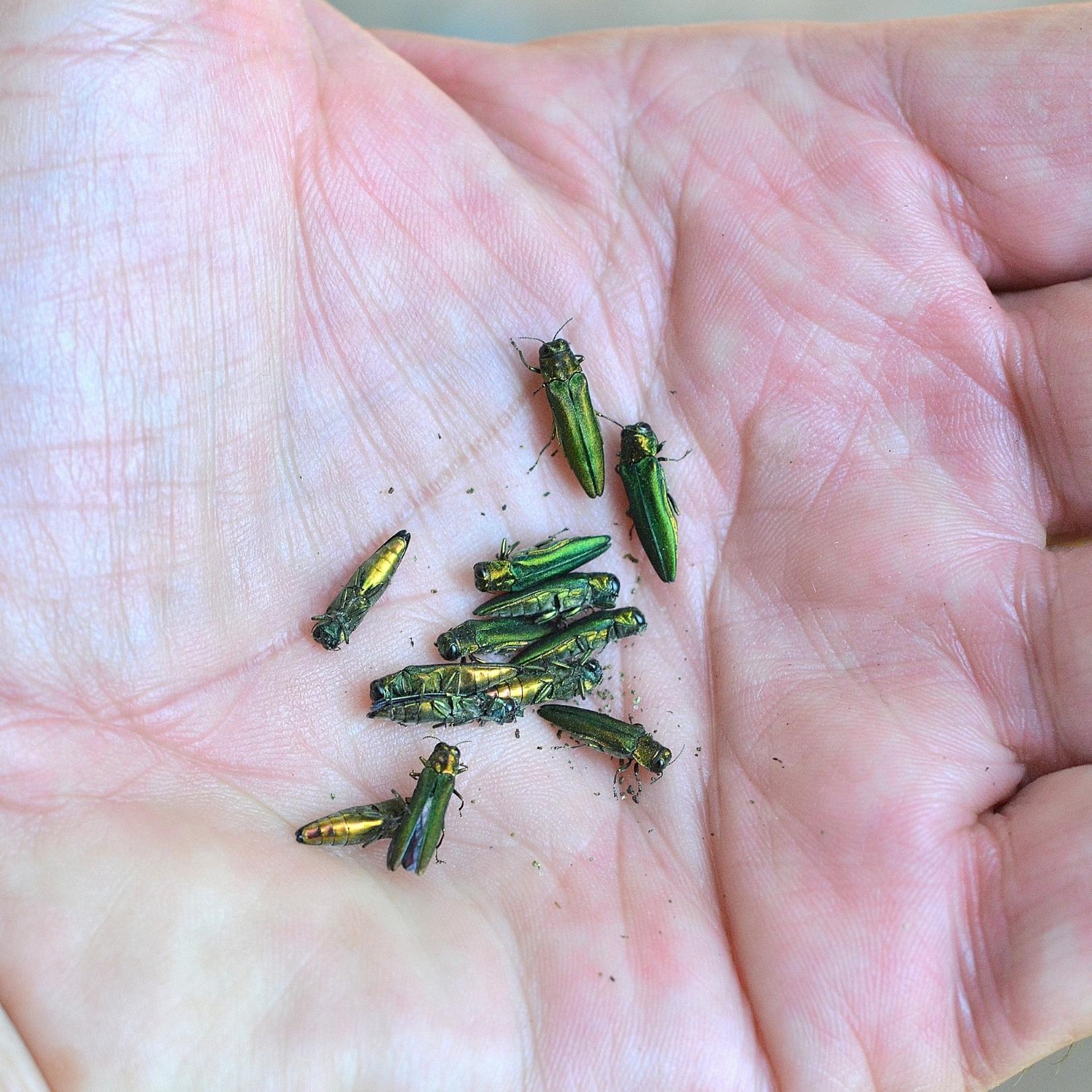Blog
Twenty Years of the Emerald Ash Borer

By Tom Brochu, Ohio Certified Volunteer Naturalist and Member of the Society of American Foresters
As we walk the trails of the Cincinnati Nature Center—or just about anywhere in the Central Hardwoods Region—it may be difficult to remember a time when our ash trees were healthy. This summer marks exactly 20 years since the public first became aware of emerald ash borer and the pending loss of one of our most important trees. The sights of standing dead ash trees or ash logs on the ground have become so commonplace that it’s easy to forget that our forests didn’t always look this way.
It's also easy to overlook some hopeful signs of life in the forest understory.
The emerald ash borer (Agrilus planipennis) likely arrived in North America on shipping material from Asia in the 1990s and was first identified in Michigan and Ontario in 2002. In July 2022, biologists in Oregon confirmed the first sighting of emerald ash borer on the West Coast. EAB is a species of beetle in the order Coleoptera that specializes in trees of the genus Fraxinus, which includes our native ash trees. In its native Asia, it does little major harm to its hosts, just as under normal circumstances, most of our native wood borers seem to coexist quite nicely with our native trees. Far from home in a new ecosystem, however, EAB became a killer, the most destructive forest pest in North America.
In the early 2000s, we began to read general news stories and scientific papers about the spreading threat of EAB. In our forests and our neighborhoods, we could see thinning tops on our beautiful ash trees and that characteristic “D-shaped” hole in the bark, noting the point of exit of an adult emerald ash borer. The adults emerge and fly to the canopy, feeding on the leaves of the ash trees, but not generally causing major defoliation. After mating, the female EABs deposit their eggs on the bark, often in cracks in the bark or where branches join the main stem. So far, no significant damage to the ash tree has been done, but that changes when the larvae emerge from the eggs and bore beneath the bark into the tree’s phloem layer and even deeper into the xylem tissue. It is here that the larvae feed their way across the tree’s vascular tissue, building tunnels called galleries, which eventually deny the host tree its essential flow of nutrients.
After overwintering, the EAB now in pupal stage, emerge from that D-shaped hole as an adult, its damage done and ready to begin the life cycle anew. As we walk through the forests of our central hardwoods, the images of what the EAB larvae have done are all too familiar to us.
.jpg)
But look more closely. Something is happening.
If you walk the trails of the Cincinnati Nature Center this year, you will see a crop of seedlings with compound leaves and opposite branching. Many of these are right along our trails yet they are easy to overlook. Looking closely, you’ll see that our woods are well-stocked with new growth of ash trees. If you look a little higher, maybe 6 to 8 feet high, there are healthy looking white ash saplings with no signs of EAB damage yet to be seen. The rule of thumb in the past 20 years has been that a tree under 2cm in diameter, or about 1 inch, was too small for the EAB to make a home. These saplings that we see this year are now about at that size, so just entering their vulnerable time. If you like walking the same trails, you might do some “citizen science” over the coming years and monitor one of those promising looking ash saplings to see if it remains healthy.
As these young ash trees grow, no one is really certain there will be another devastating EAB surge as was the case 15-20 years ago. It is quite likely that enough EAB remain that we will see significant damage and mortality, but we do not yet know if it will be an “extinction event” similar to the Chestnut Blight of the early 20th Century. Another well-known invasive pest, spongy moth (Lymantria dispar dispar), once referred to as gypsy moth, exhibits a pattern of infestation peaks and valleys. It continues to cause damage but the extent of that damage seems to ebb and flow over a few years. Could EAB follow a similar pattern?
US Forest Service researchers such as Dr. Jennifer Koch and Dr. Kathleen Knight are studying both the genetic breeding potential and the ecology of EAB spread to position us better for the survival of our ash trees into the future. Among the major areas of study is that of the “lingering ash trees,” those individual trees that for reasons not fully understood remain standing and alive even though surrounded by other ashes killed by the EAB. Those persistent survivors may hold the genetic key to developing a resistant variety of ash trees. Biocontrol, including parasitoid wasps that feed on the emerald ash borer, also offers promise for the future.
Twenty years ago, our forests looked different. White ash and green ash were major components of the forests and neighborhoods in our region. Today, we can still see the standing dead “snags” in our woods and in many neighborhoods, the last of the ornamental ash are hanging on, but just barely. But like most things in nature, be sure to look closer. Pause and look down. There’s new life down there. Those young seedlings and saplings are trying their best to survive and make it back into the canopy.
So take a hike, find a few young ash trees, and watch them grow. With a little luck, maybe a few will make it!